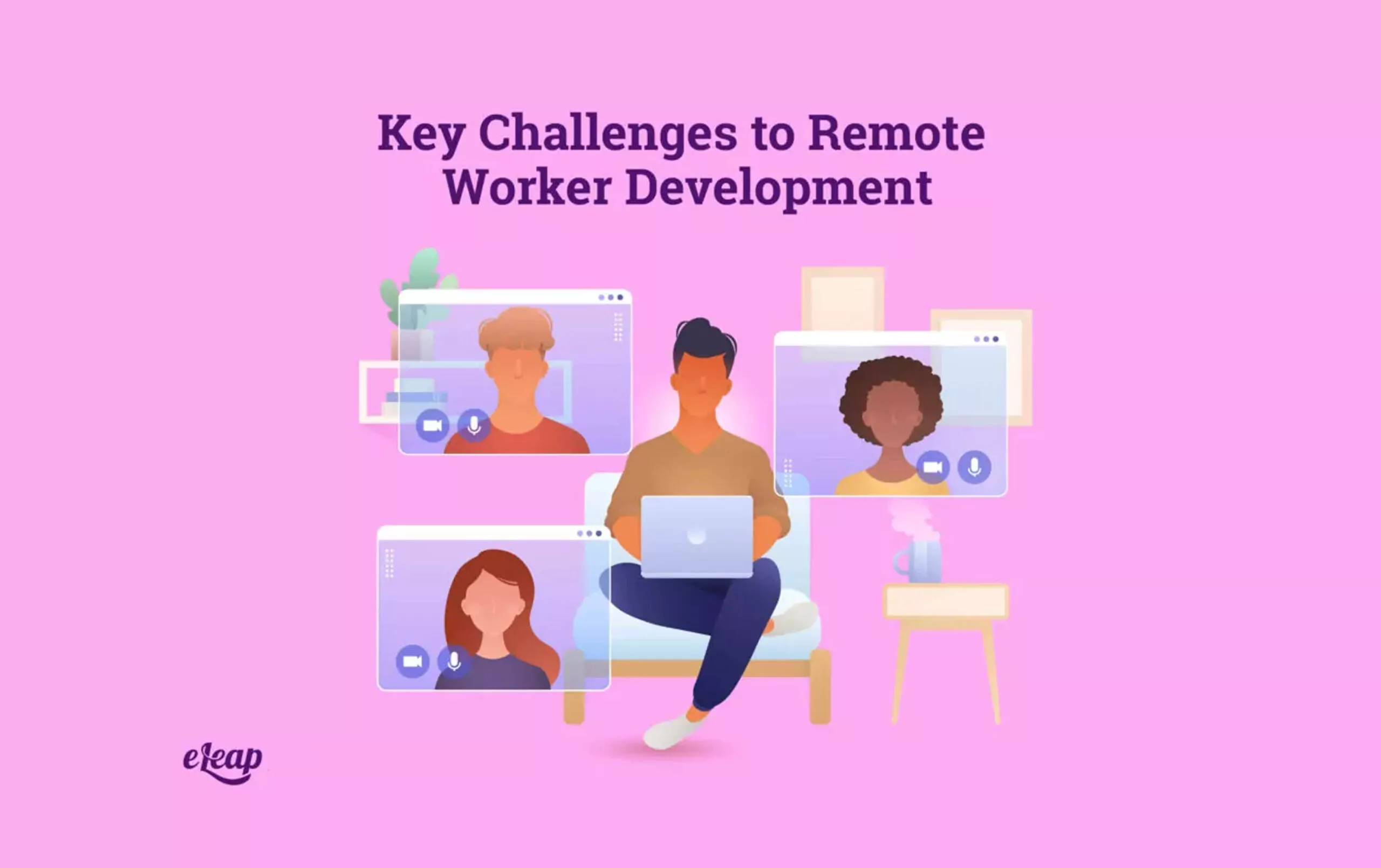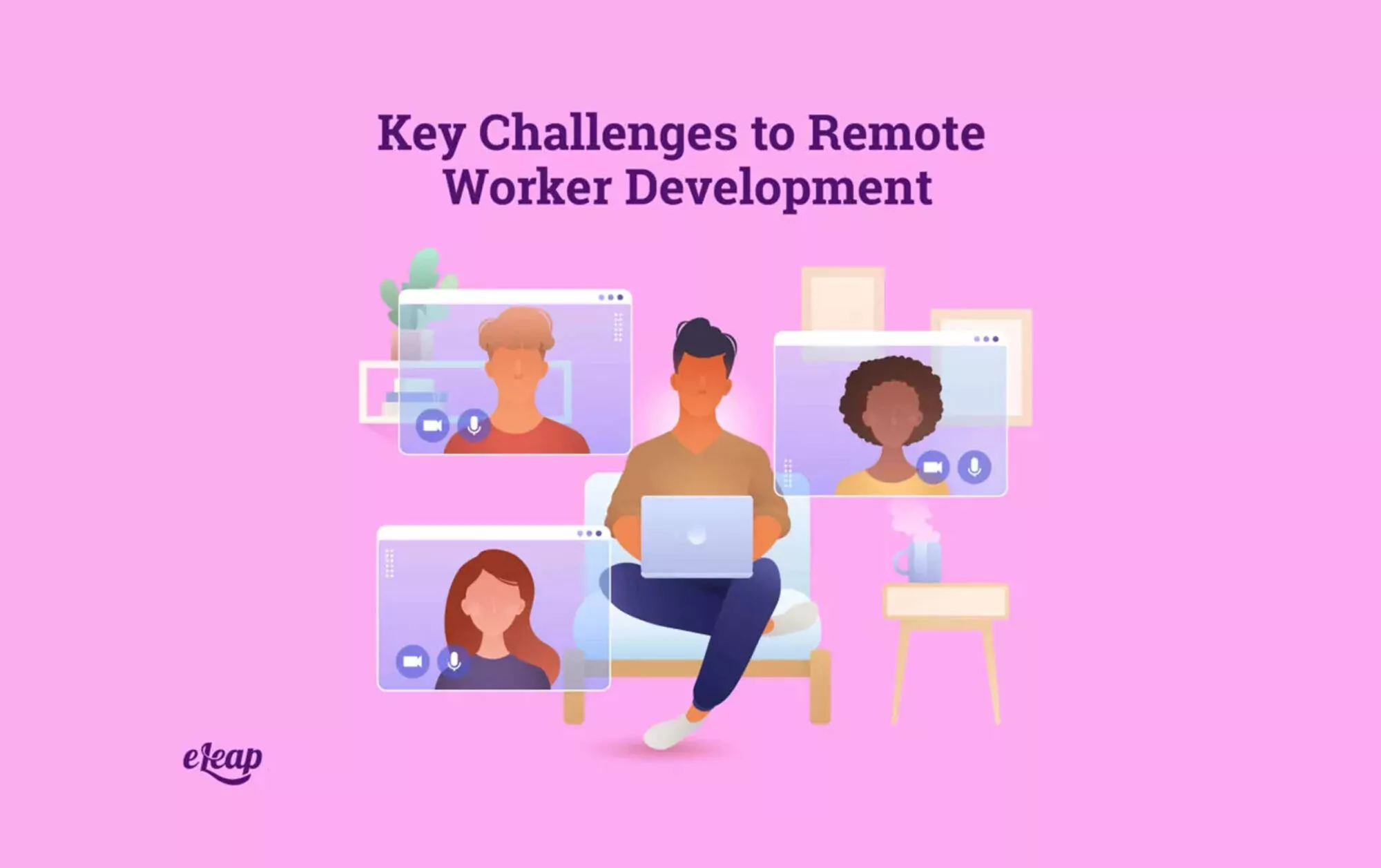Key Challenges to Remote Worker Development

Performance management (PM) and learning and development (L&D) are inextricably linked. They are two sides of the same situation – developing workers and ensuring that they are living up to their potential. Often, performance management is really the process whereby managers discover the gaps in an employee’s skillset and then L&D is the process where those gaps are closed.
The issue here is that the COVID pandemic has thrown a wrench in the works. Most organizations remain largely remote today. That can be challenging to worker development and ensuring that performance standards will be met through personal and professional improvement. Understanding these challenges is critically important for both managers focusing on managing performance and L&D professionals designing content.

Too Much Work
The first challenge to both worker development and better performance management might just be too much work. This is often a natural side effect of working from home, as well as other reasons, including:
- Employees sometimes find it hard to separate work and home life in these situations. This can lead them to be “always on”. Eventually, this saps their energy and motivation, leading to reduced performance, increased stress, more coaching, and other problems. However, if an employee is always working, they have less time for development necessary to cultivate important skills and capabilities.
- In other instances, managers and team leaders might overload an employee with duties and responsibilities. In a remote work situation, it’s easy to lose sight of the fact that you’re dealing with real people in the real world, rather than just moving cards around in Trello or something similar. In this case, it might be that the leaders need further development to help them more accurately handle delegation and assignment-making.
Inability to Prioritize
When given two tasks – completing job duties and completing lessons in the LMS, employees are almost always going to choose job duties. This is particularly true in organizations where learning is not seen as a goal in its own right. However, it can occur even in businesses that place a lot of value on L&D.
The problem here is one of prioritization, a skill that, ironically enough, employees can master through further development. Without an ability to prioritize, or without a manager who can clearly define which tasks to do and in what order, employees can feel frustrated, stymied, and progress grinds to a halt.
The solution here is multipronged. First, managers must be able to clearly communicate priorities for their team members. If they cannot, that indicates a need for further training and development on their part. Second, employees should be encouraged to complete their training just as much as they are encouraged to complete other work responsibilities. If the business cannot afford the time for an employee to improve themselves, likely it needs to hire more employees.
Conflicting Messages
One reason that employees fail to focus on development, particularly in a remote situation, is that they receive conflicting messages from different leaders. For instance, an executive might encourage employees to pursue learning and development during a company-wide meeting. However, when they approach their direct manager about scheduling learning and development time, they might be told that there is not time right now, or that there are too many other priorities and L&D will have to wait.
The most important step in this instance is consistency in messaging. Leadership, from the C suite all the way down to team leaders, must be on the same page so that consistency can be achieved. Without consistency, employees receive conflicting messages, which becomes confusing and frustrating. They can feel like they are being pulled in multiple directions, and learning will certainly not occur.
The Value Is Not Apparent
One very common reason for remote workers not to pursue performance-related development is that the value is not made apparent. This often ties into the company’s culture – if the leaders don’t value learning and development, that attitude trickles down throughout the company. However, there are other reasons that employees may fail to see the value, including simply not being aware of how the learning can improve their career path.
This is perhaps the simplest of the obstacles on our list to overcome. It really just requires that the manager become an advocate. During check-ins and one-on-ones, the manager should connect performance goals with relevant training. For instance, if the employee has struggling with customer communication, the manager could point out which modules in the LMS would help them learn the skills necessary to improve their performance.
However, culture-related issues cannot be addressed quite so easily. If your organization’s culture does not value learning, then no amount of recommending or even requiring employees to complete training is really going to make a meaningful, measurable change. This requires a change to the culture itself, which requires time, strategy, and effort.
Past Experience
Performance management-related development options are nothing new. However, past iterations were not particularly well designed. Employees who dealt with those previous generations may not be particularly happy about repeating the experience.
This is another relatively simple issue to overcome. The answer is to implement a modern, cloud-based learning management system (LMS) that supports multiple types of content delivery, includes interactive features, and is capable of providing an engaging user experience. At eLeaP, our LMS embodies next-generation capabilities for both learners and administrators, helping to connect your people with the need for learning and the value to performance.
Designing a Solution
Remote workers face a number of unique challenges, but they also face many of the same ones in-person workers do when it comes to performance management and L&D. For organizations, finding a path forward can be daunting, but it is possible. It involves taking a deep dive into your company’s culture, identifying any attitudes or elements that denigrate learning, and then removing them. It also requires getting onboard with modern development technology, providing cohesive communications with employees that communicate the need for development to change performance, and more.